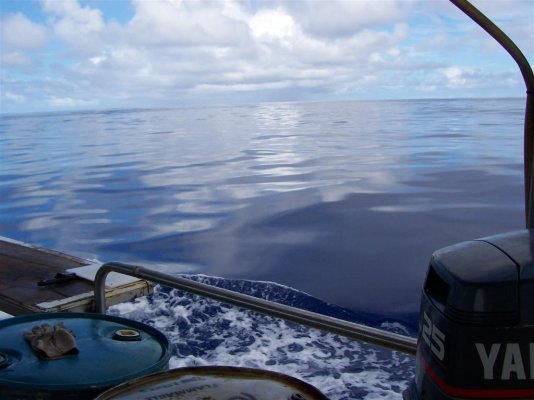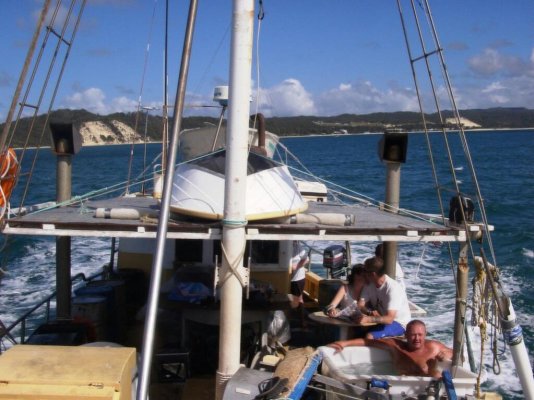I’m a newbie compared to some here but have been doing ocean passages for quite awhile. I’ve commented on the importance of understanding weather, being an experienced and competent captain as well as crew selection. But the OP was about the boat not these other issues. Yes, they are key. Yes, only experience teaches. Courses, having tickets or coastal experience is meaningless in my view. However, there’s a contra positive. We try to leave with 3 and one newbie so the sport continues. However any of those 3 could serve as captain. As regards the newbie rather have a woman with no confidence in her skill set than a 6 pack captain with 20 years behind him. The woman is more likely to listen and learn. Less likely to have a “better” way and not follow my protocols to the letter. Also more likely to ask for help if she doesn’t understand something rather than messing with it and breaking it and more likely to wake me if she feels a vibration or hears a new noise. Find the worst crew are US self attested coastal captains. There are 10 ways to do anything on a boat. 9 of them are wrong. You can be doing something which isn’t the best way for decades. Important to remember that and learn from your crew or teach your captain.
One of the reasons we’re switching from sail to power is that we expect to budget about the same annual expense. Have had multiple cockpit conversations with people doing a similar program as ours. We pulled down our pants and talked reality with multiple cruising couples. On a cruising boat the vast majority of systems are the same.
Watermaker, heat, AC, frig/freezer, electronics, communications, tools, spare list is even quite similar and a bit cheaper for power, entertainment, laundry, safety etc. Cruising costs are the same. Customs/immigration, flights home, food, cabs,or rentals , bars/restaurants etc.
Yes, you liberate more hydrocarbons but if you buy fuel in places like Trinidad, Grenada, Mexico you can cut those costs some. Still, I don’t think people realize the expenses of sail. Friend on sistership just bought a new main ( $22,000) and Solent ( $8,500). Unlike coastal sails these see UV and 20kts day after day. You can expect $1-2k/ year and $30-50k every 7-8 years on a blue water boat that actively cruises. Add in rigging, deck hardware service and replacement and then running rigging replacement you’re quite comparable to annual costs of power. Hull services (anodes, bottom cleaning and paint) and wax/polish/wood servicing cost are the same.
Totally agree many go sail, power then RV as they age. However, even in that group some don’t give up on blue water. We’ve been searching for a decent N40,43 or 47. Agree very few have ever done passages over 1000nm but for many a FD makes excellent sense. Just long coastal jumps requires a stout hull, excellent range and creature comforts. Folks make mistakes when their tired, stressed and uncomfortable. A cascade of mistakes it what leads to serious difficulties. It’s after days of moderate conditions of 2-3 m swells with wind waves on top that people fatigue. Think survival weather is often overstated and it’s the force 5-8 that wears you down. Think it’s here that boat selection and outfitting makes the biggest difference on a day to day. Similarly being 50 nm off course when mid ocean really doesn’t matter. It’s only coastal that your navigation needs to be spot on. Radar and AIS have been game changers. But having done Marion Bermuda with a cheap plastic sextant and a wristwatch believe the over reliance on screens as a safety requirement is misdirected.




